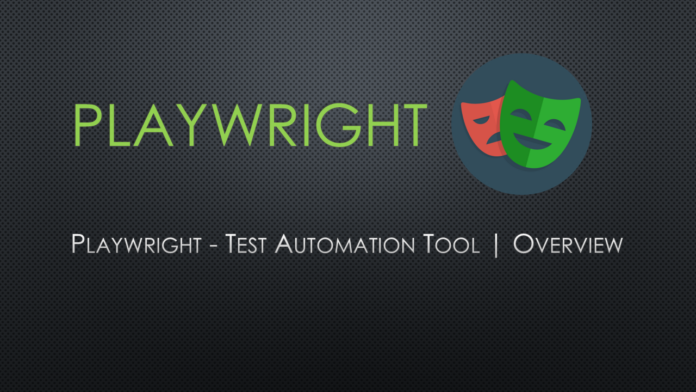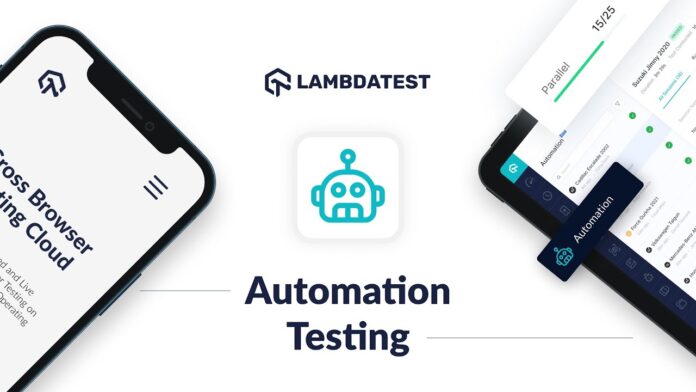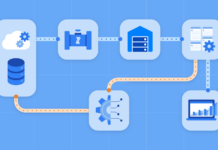Automated testing tools are used to test the functionality of web applications that are created using suites like Ruby on Rails, PHP, Django, and others. Although automation is a time-consuming and often costly process, with the playwright testing and selenium testing tools, the process often gets easier and makes it suitable for the testers to come up with a perfect solution.
Clearly, the concept of automated testing of software and web applications has been around for a long time now. But due to the rapid proliferation of software testing tools, it’s never been more important for organizations to gain a basic understanding of automated tests. Precisely, Selenium and Playwright are two automated testing platforms that help developers ensure that the software under development is working as expected. Both Selenium and Playwright are capable of automating web applications of any type, yet there are some key differences that make both of these platforms stand out.
Playwright Testing Tool

The playwright is one of the newest tools in the burgeoning field of browser testing. Playwright has several big selling points – it can use modern test-driven development techniques, it is built on top of a sophisticated code-testing engine, and it features a convenient, even elegant, web-based interface.
- The Playwright testing framework is a web application development tool built by the team behind Cypress. It allows users to create and execute automated tests using an intuitive, visual UI. The goal is to present a modern alternative to older techniques like Puppeteer which are less well-suited for testing applications built in a functional style.
- Playwright enables you to create automated tests of your Electron application across different browsers and platforms. Since it is based on Headless Chrome, it performs test running at native speed. It is open source and free to use on Linux, Windows, macOS, and is also available as a Docker image.
The playwright provides lots of ways to navigate through the pages, including standard methods as keyboard shortcuts, mouse and touch input, as well as commands which are unique to Playwright. All of these options bring convenience when working with the testing framework.
Advantages of using Playwright Testing Tool

Testing the UI of a web application can be difficult and is a time consuming process for the developers present there. It’s usually a tangle of dependencies on browsers and frameworks, and tests are very fragile. Playwright changes that by isolating the browser context and applying a test-agnostic higher-level format.
- This framework is designed to be readable and expressive enough to let humans be able to write tests for machines that can carry out these tests automatically and repeatedly invoking browsers with different states. Automation has become a major part of the foundation of the new approach to development as opposed to a simple byproduct of it.
- The playwright was specifically designed to ease the process and maintenance of functional, UI, browser and performance testing. A major part of the testing process at Microsoft is automated functional tests. The way this is done right now, is by using a framework called CasperJS which emulates user events and interacts with DOM elements in a scriptable manner.
- The biggest downside to this approach is that they need to use these third party scripts to get their tests executed on whichever browser they want to test on. This approach also has many redundancies, time-consuming and significant maintenance overhead that needs to be taken care of every time they have a hotfix or a new release of any application being tested.
Due to the nature of being able to create and run reusable functions, it also helps in many areas, such as writing new tests for a feature and running tests in parallel with changes in its source code.
Selenium Testing Tool
With the increasing number of web applications and the need for testing, a demand for web testing software arose. Selenium, an open-source framework, was created in 2004 to respond to this need. It enables developers to write automation tests using any major programming language.
- This framework was built on the WebDriver API which is a set of interfaces used to access browser functionality programmatically. Selenium Webdriver removes the need for custom code development, page writes or communication between layers.
- It supports both web and native applications, including mobile applications. Selenium can be used for both functional testing and regression testing and has an API for developing test-automation tools which work with a variety of programming languages, such as Java, Perl, Python, Ruby, and C.
Developers unfamiliar with Selenium face a few challenges like over reliance on specific scenarios that only work with certain browsers; maintaining and updating existing code as product enhancements or company standards change; and writing new tests for every change or bug fix.
Advantages of using Selenium Testing Tool
The original idea behind Selenium was to use it for testing web applications, and Selenium indeed still works great for this purpose. However, Selenium has been widely adopted by software testing companies for automating tests of mobile applications, native apps, desktop applications, and even Microsoft Office.
- Selenium allows you to test certain things that would be completely impossible using just a manual tester. For example, in financial app testing, it should trigger some action if the specific threshold is crossed. You can also see the price going through some random fluctuation and then get back on track. This can’t be done manually as you need to watch it for hours and hours to see such changes in behavior.
- Selenium IDE is amongst the most favorite Selenium Add-on. It is an extension that is used to create automated web applications. Selenium WebDriver is an essential tool for developers and testers as it allows us to use web page elements, such as buttons and links, in order to perform application testing.
Selenium also provides its own recorder that can be used to automatically generate test cases. Furthermore, it allows you to record tests in a variety of languages or the browsers available and also allows you to execute them from the supported programming language.
Key differences between Selenium and Playwright

When it comes to choosing the right tool for the job, both Selenium and Playwright should be considered. Their limitations and advantages seem comparable, but when put in real world scenarios, their difference becomes more clear. However, the most critical thing when comparing the two frameworks is deciding what unit tests to run. Playwright supports .play, .js, and .excel, but it needs NodeJS installed on all machines. Selenium, on the other hand, comes integrated with Java webdriver, SQL libraries, and Groovy language for writing scripts. So, when attempting to automate an application in multiple languages or highly dynamic web pages that load new features randomly, opt for Playwright, while using Selenium if you plan to run test scripts on servers regularly.
- While Selenium is a browser automation tool, Playwright is an API-based web application test automation tool. This basically means that for Selenium you need to have knowledge of programming languages like Java or C++ whereas if you are using Playwright you won’t have to worry about coding. It provides a graphical interface that can be used even by non-coders. Since it’s an API-based web application test automation tool you will not have to manually locate elements on the application and then interact with them.
- Moreover, Playwright uses APIs to send commands to the application under test and returns the response. The response data is populated into GUI widgets which can be used to determine the status of the current test case execution. Selenium is a tool for web application testing, whereas Playwright is a framework for the development of applications that can be run automatically against any conceivable program.
| Name of the Feature | Playwright | Selenium |
| Operating systems available with the testing framework | Playwright testing tool supports Mac OS, Windows and Linux | Selenium testing tool supports Mac OS, Windows, Solaris and Linux |
| Architecture of the testing tool | The architecture of the Playwright testing tool has a headless browser associated with the event-driven head. | The architecture of the Selenium testing tool has layers based on the JSON Wire Protocol. |
| Time and effort for installing the framework | For installing Playwright testing tools, the effort and cost isn’t much which makes it favorable for the testers. | For installing Selenium testing tools, the effort and cost isn’t much which makes it favorable for the testers. |
| Things needed before installing the framework | To install Playwright, the tester needs to have NodeJS already available in the system. | To install Selenium, the tester needs to have Client Language Bindings, Eclipse IDE, Browser Drivers, Java and Selenium Standalone Server. |
| Browsers available with the framework | For the Playwright testing tool, the browsers available are WebKit, Chromium and Firefox which makes it easier to use the framework. | For the Selenium testing tool, the browsers available are Safari, Chrome, Edge, Opera and many more available with the framework. |
One of the key aspects to consider is that both Playwright and Selenium are open source. The robustness and strength of the community is perhaps one of the most decisive factors to consider before selecting a software product or service. The number of subscribers, potential customers, as well as their financial resources are also some of the points that should be considered.
Wrapping Up

Websites are the major platforms, which provide enormous opportunities to the cyber-world. Each and every commercial organization wants its own website in order to promote its products or services. Controlling the right functioning of a web application, which includes various steps such as creating a functional requirement, writing a foolproof code, operation testing and integration testing. All of these play an important role for the developers who are working on the code. Software testing with tools like Playwright and Selenium is the most vital stage of any software project. It ensures that your software product performs well and will cover your client’s requirements. This software testing plays a crucial role in today’s competitive market as it helps you strengthen your position in a huge market. In order to perform this software testing project successfully, choosing a suitable tool for test management is very much important.
You can begin your Selenium test automation procedures with LambdaTest on a Cloud of 3000+ desktop and mobile browsers. The platform also offers automation testing with Playwright on 50+ browser and OS combinations using the LambdaTest cloud. You also get real-time insight into your testing activities so you can see any bottlenecks or high-impact problems right away. Sign-up for free for Selenium and Playwright testing here.









